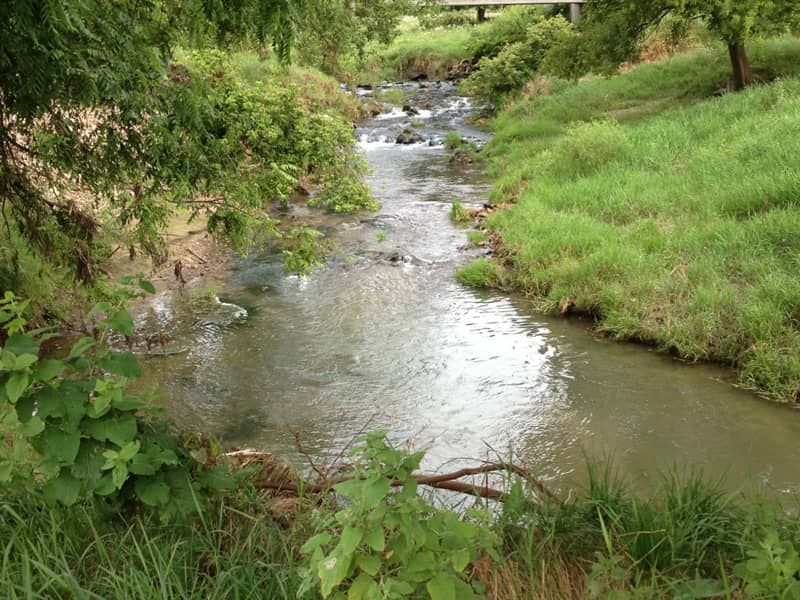
Protecting public fishing areas and keeping waters clean comes down to picking up what winter (and perhaps people) left behind. Spring is a great time to visit your favorite stretch of water and make sure it provides a good, clean experience for anglers all season long. Simonson Photo.
By Nick Simonson
As winter gives way to spring and we see what the snow and wind left behind, it’s easy to pick out the places that need a little TLC, or to refocus our efforts with organizations that share our mindset for the conservation of wild places and clean waters and the wildlife that thrive within them. What follows are five easy ways to contribute to conservation – with little to no effort this season – and make hunting, fishing and wildlife habitat all the better for it in a big way.
Spring Cleaning
Whether in a roadside ditch, a neighborhood gutter or along the shores of a river or lake, trash from a cold winter often accumulates where the last snow drift melts away.
Whether by yourself or through an organized effort of neighbors, sporting group members, or chapter representatives of a national organization, clean-up projects make great ways to see immediate returns for wildlife and outdoor opportunities. Picking up trash along a roadside prevents pop bottles and Styrofoam cups from making their way into any nearby rivers, ponds or lakes where they may impact fish survival or the health of waterfowl. Doing the same along the shores of a water will make public fishing areas cleaner and more aesthetically enjoyable when it’s time to wet a line. Best of all, depending on how many hands are available, it should only take an hour or two.
Banquet Time
For many local and national conservation groups, spring is banquet time and after two years under the shadow of the pandemic, many of these organizations are looking to get back to normal or become even stronger through their annual banquets. At these fundraisers, local chapters and sportsman groups raise dollars that go back into the ground in the form of habitat, into access projects for anglers and hunters, and into youth programs such as clay target teams, archery leagues, and fishing courses. Simply by attending one of these events, re-upping a membership, and bidding on all sorts of auction items and raffles, those funds are raised, bonds are built, and the future of local and national conservation is made possible.
Checking In
Unfortunately, spring also means tax time, but hidden in that blur of W2s, K1s and 1099s is a little box on many state tax forms which allows for a donation to a non-game or watchable wildlife fund as part of that jurisdiction’s return paperwork. These dollars provide significant funding for habitat projects, volunteer coordination and other necessary efforts to preserve habitat for and keep track of non-game species such as songbirds, pollinators, reptiles, and amphibians. Not surprisingly, given the interconnected nature of our outdoor world, these habitat impacts help bolster game species as well. Consider adding a voluntary donation to help those watchable species and more this spring, when facing down one of this life’s few certainties.
Buyer’s Market
This spring, despite the rising costs of seemingly everything and high inflation numbers, its likely shooters will keep shooting, hunters will keep hunting, and anglers will keep casting. That’s a good thing because the purchase of shells, firearms, fishing tackle and other related equipment help fund the various state agencies and their conservation and wildlife management programs through the Pittman-Robertson Act and the Dingell-Johnson Act. Both federal programs have been around for decades, and each of them generate funds via a small excise tax on ammunition and firearms and fishing tackle and equipment, respectively.
That money flows back from the federal government to the individual states to help preserve and protect wildlife, huntable game, fishable species and access to them. Simply by making these purchases, people are helping with conservation, so go ahead and splurge on that new rod and reel or pick up an extra case of shells for a young clay target league participant and continue habitat preservation and restoration in the process.
Pass It On
Finally, passing on a passion in the outdoors is perhaps the best way to foster future conservation of the resources treasured by all hunters and anglers. Whether it’s teaching someone how to shoot trap, helping them craft their own lures for a first fishing adventure, or simply taking them along on a turkey hunt this spring, sharing the outdoors with a new or returning hunter or angler can ignite a spark that makes them a warrior for conservation.
Through those efforts now, the future torch holders are minted for clean water, healthy lands, pure air and access to it all. While those mentors who get to see such an impact are lucky, they may never know how important those little acts can be in the future of hunting and fishing in this country, and in the lives of those learning the ropes.
Keep these five things in mind as spring settles in and opportunities abound to improve those local areas and make a national and global impact on conservation. From the simple acts of picking up trash, purchasing a new set of spoons or taking someone fishing, all the difference is made in the present state of our outdoor resources and quite possibly can change the future for the better.
